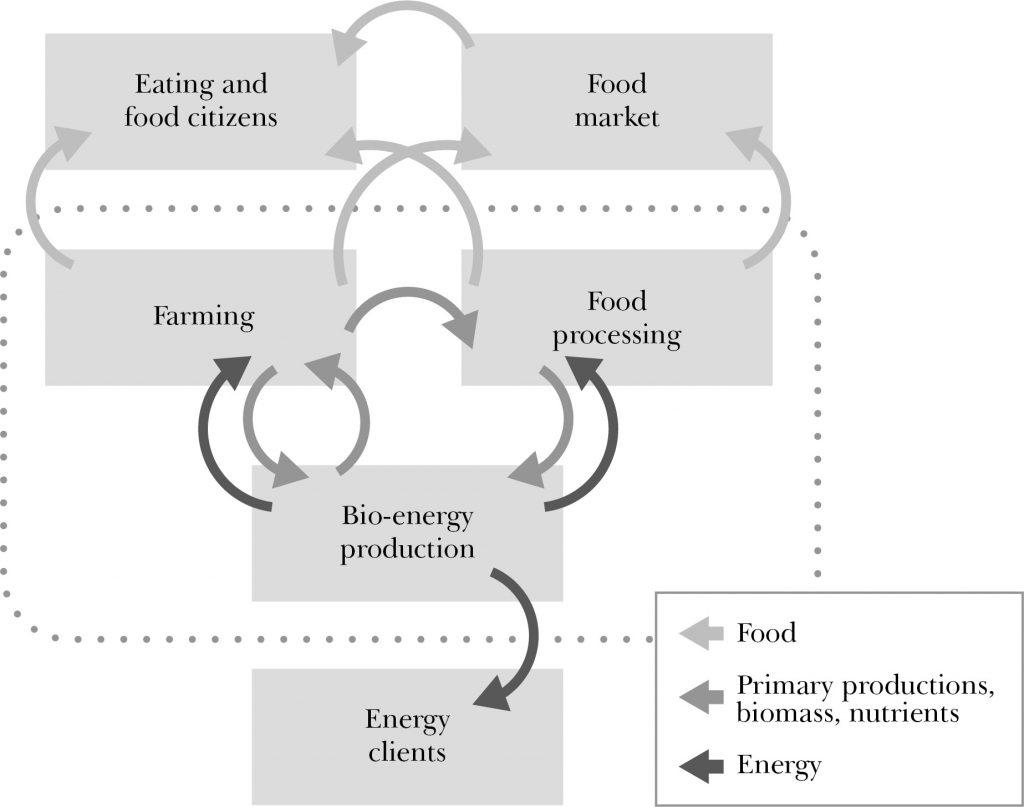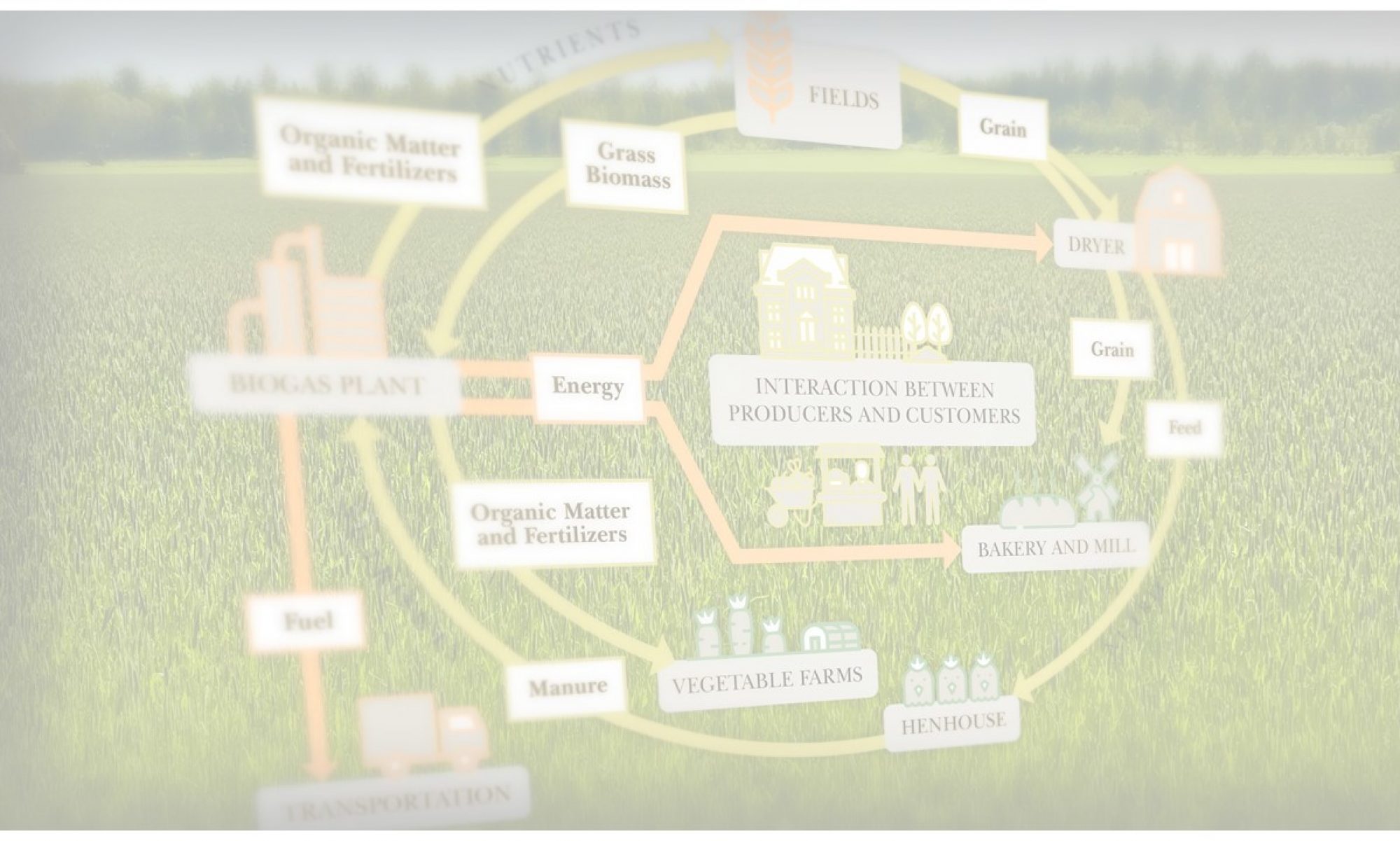Agroecological symbiosis (AES) is a model for a generic arrangement for the food system that aims to achieve systems-level sustainability. This model addresses the primary production of food by integrating food production, food processing, and energy production. In addition, the AES model supports the on-the-ground development of a food community through the implementation of human-scale food production and processing. A food system premised on AES has the following goals:
- To practice farming and food processing based on renewable bioenergy
- To close nutrient cycles
- To break away from the consolidated food chain
- To be more transparent and connected with consumers
- To revitalize the rural spaces
The AES concept originated as part of a co-creative process focused on redesigning organic food production in Palopuro village, Finland. The parties to the initial development were farmers, other local-level actors in the food system, and researchers from the University of Helsinki and the Natural Resource Institute Finland (LUKE) (read more about this project here).



 PhD Candidate
PhD Candidate  PhD Candidate
PhD Candidate